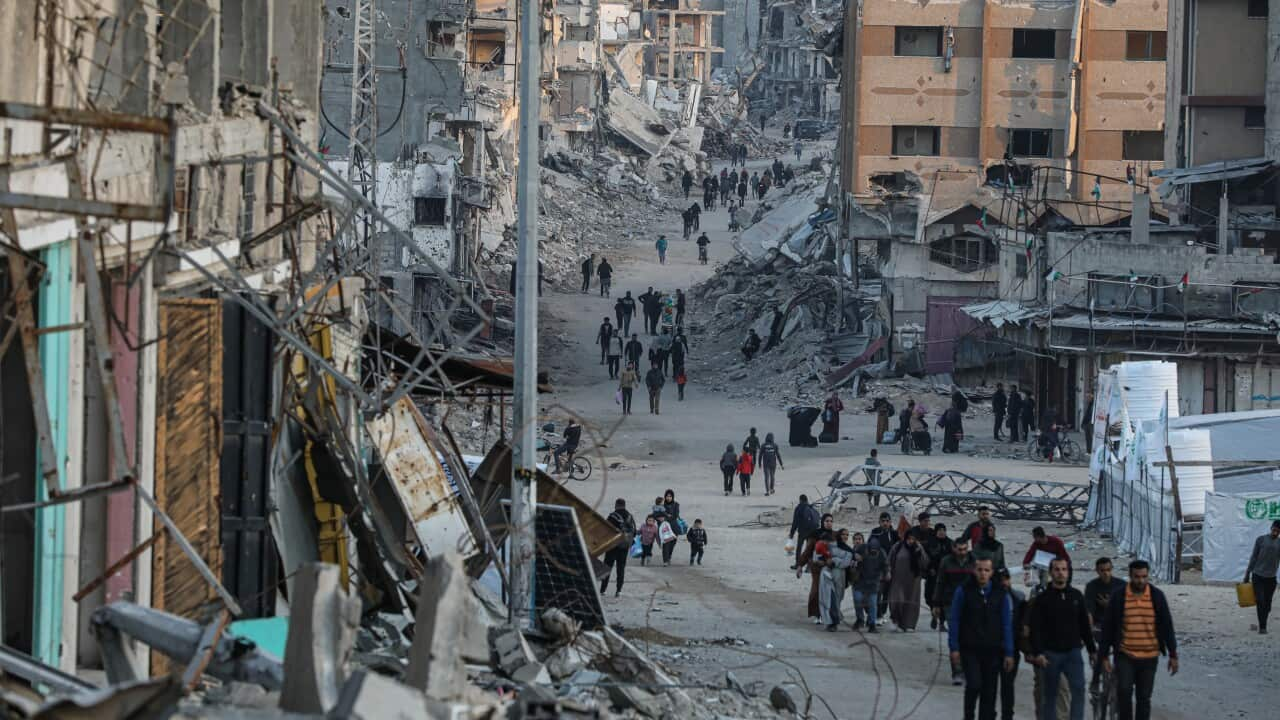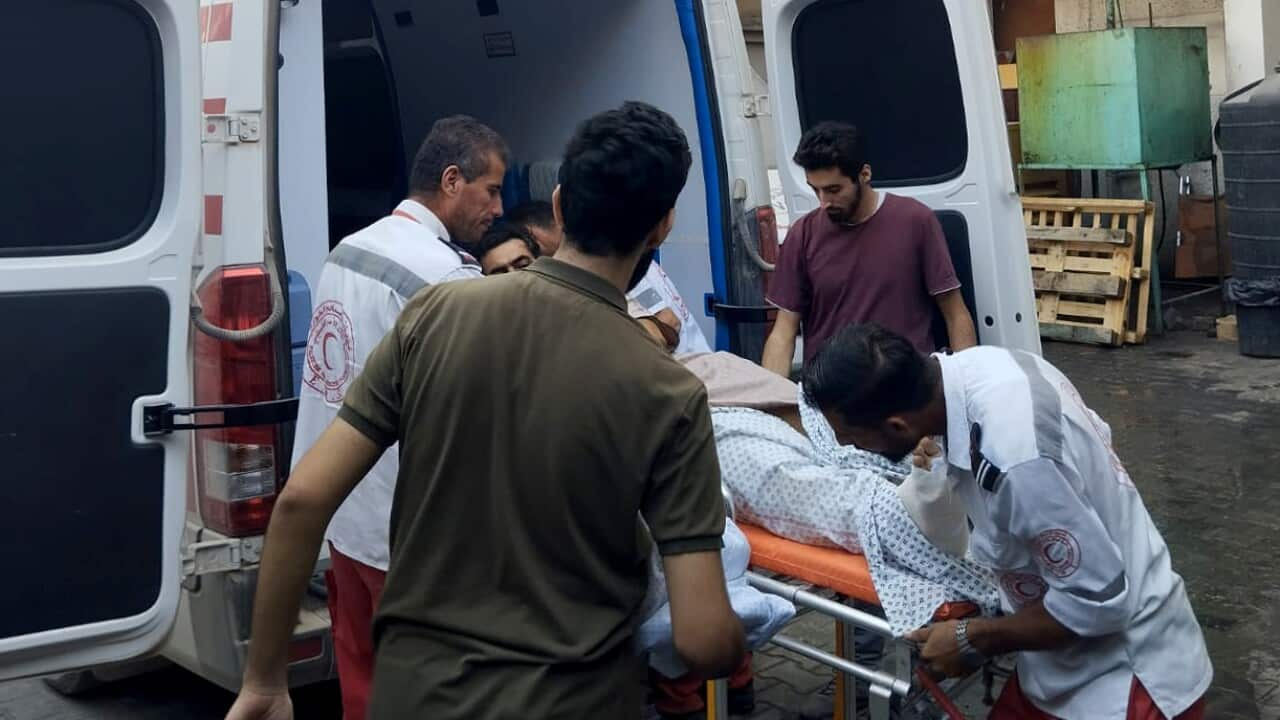Key Points
- Two Israeli airstrikes hit Yemen's main airport on Thursday.
- A UN delegation that included the World Health Organisation's director-general was at the airport at the time.
- Three people were killed and dozens injured in the blasts, according to the UN.
Israeli airstrikes hit Yemen's main airport as an Airbus 320 with hundreds of passengers was landing and a United Nations delegation was waiting to leave, the UN's top humanitarian official in Yemen said.
Julien Harneis told reporters he was with about 15 others in the VIP lounge at the international airport in Yemen's capital Sanaa, including the head of the World Health Organization (WHO).
Harneis said the most frightening moment of the two airstrikes on Thursday was the destruction of the airport control tower as a Yemenia Airways plane was taxiing in after touching down.
"Fortunately, that plane was able to land safely and the passengers were able to disembark, but it could have been far, far worse," said Harneis, who was with WHO director-general Tedros Adhanom Ghebreyesus in the lounge.
Harneis said one projectile landed approximately 300 metres south of the VIP lounge and another about 300 metres to the north, while about five members of the UN team were outside the building.
"Not only, obviously, did we have zero indication of any potential airstrikes, but we cannot remember the last time there were airstrikes in Sanaa during daylight hours," Harneis said in a video news conference from Sanaa.
Speaking on Saturday after the ordeal, Tedros said the explosions that rocked the building were so deafening that his ears were still ringing more than a day later.
Tedros said it quickly became apparent the airport was under attack, describing people "running in disarray" through the site after approximately four blasts, one of them "alarmingly" close to where he was sitting near the departure lounge.
"I was not sure actually I could survive because it was so close, a few meters from where we were," he said.
"A slight deviation could have resulted in a direct hit."
The UN said at least three people were killed and dozens injured in the strike. Among the injured was a crew member from the UN Humanitarian Air Service, about to fly the delegation out of Sanaa.
He suffered a serious leg injury from shrapnel and lost a lot of blood, Harneis said.
He said UN security officials moved the delegation out of the VIP building and into five armoured cars where they waited for approximately 40 minutes to ascertain what happened and help the injured crew member.
He was taken to a hospital in Sanaa and underwent four hours of surgery while the rest of the delegation spent the night in a UN compound, Harneis said.
The UN plane carrying the delegation, including the injured crew member, was able to depart for Jordan on Friday afternoon — without an operating control tower.
The UN said the injured crew member was taken to a hospital in Jordan.
Yemen's Iran-backed Houthi rebels control Sanaa and much of the country's north.
The group began mounting attacks on Israel after it started its assault on Gaza following
Early on Saturday, the Israeli Air Force reported intercepting another missile from Yemen, as sirens woke Israelis around Jerusalem and the Dead Sea.
The Israeli army said it was not aware the WHO chief or UN delegation were at the Sanaa airport on Thursday. Israel said it bombed the airport because it is used by the Houthis and Iran.
Harneis said the airport is civilian, not military, and is used for transporting UN and other humanitarian workers, as well as one civilian flight — Yemenia to and from Amman, Jordan, which operates as a result of an international agreement.



